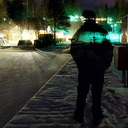0 Likes





Overview and HistoryBelgrade is the capital of Serbia and has a population of just under two million. It's in the middle of the Balkan Peninsula in southeast Europe where the Danube and Sava rivers meet.Belgrade is one of the oldest cities in Europe with a history that goes back seven thousand years! Of course, with two rivers meeting you can expect that there will be a lot of human activity across the ages. Caves with Neanderthal skulls and bones from the early Stone Age show the time frame we're talking about here.Due to its strategically valuable position between East and West, Belgrade has been at the center of battles throughout most of its history. Our history begins with the Roman colonization (of course) at the end of the first Century AD, when it was called Singidunum. The Huns destroyed the city in 441AD and began a period of squabbling between Sarmatians, Goths, Gepidaes and more Goths. During this time the name of the city changed to Taurunum and Malevilla.The Slavs permanently settled here in the seventh century then immediately fought the Bulgarians. The Slavic name "Beligarad" was first recorded around 878AD, then Hungary attacked and the Byzantine Empire took over, remaining in control until 1284. The first, second and third armies of the Crusades came through in the early middle ages, seeing Belgrade in ruins.For the first time, Belgrade became part of Serbian rule when King Dragutin was given the city from the Hungarian Crown. More fighting ensued, Hungary repossessed the city and by the fifteenth century they were battling the Turkish Ottoman invasion.Between 1440 and 1867 the Turkish controlled Belgrade except when they were temporarily defeated by armies from Bavaria, Savoy, and Austria. Under Turkish control Belgrade was the second largest city of the Ottoman Empire, surpassed only by Constantinople. Being stuck between the Ottoman and Hapsburg Empires was not the best place to be.Several centuries of internal rebellions and periods of occupation by the Holy Roman Empire prevented industrial development as was seen in other European countries. Finally in 1878 Serbia was recognized as an independent state and kingdom with Belgrade as its capital.The World Wars of the twentieth century were not kind to Serbia. In WWI it was heavily bombed and occupied by Austrian and German troops. The city was then liberated by Serbian troops only to dissolve into a dictatorship as of 1926.In WWII Belgrade was bombed by the Allies and occupied by Germans, who massacred one hundred Serbs for every German killed. It was liberated by the Russian Red Army, ending up as the Federal People's Republic of Yugoslavia in 1945.Recent history: Belgrade was the center of the last outbreak of smallpox in Europe during its Communist period, in 1972. Massive demonstrations took place in 1991 and protests over election fraud continued until 1997. Serbia has the highest hyperinflation in the history of mankind in the year 1993. The first non-Communist government was installed in 1997, the Kosovo War saw NATO bombing Belgrade (again) in 1999, and finally the dictatorship of Slobodan Milosevic ended in 2000AD.Serbia got its first democratic government in 2001. Yugoslavia was formally brought to an end in 2003. Serbia and Montenegro declared independence in 2006 and Kosovo followed in 2008 under continuing dispute.Getting ThereNikola Tesla Airport is where you'll be flying in if you come by plane.Do you know Tesla? He was one of the geniuses of the modern world, who invented radar and alternating current by drawing the pictures which appeared to him in visions. He came from Serbia and would have given the world FREE ELECTRICITY if the leaders of the industrial revolution had actually wanted what was best for humanity instead of what would make them personally rich. They took control of his inventions and he died a broken man.Anyway, the airport connects to Belgrade by bus, taxi and car rental. It's 18km from downtown.TransportationFrom what I hear, unlicensed taxi drivers try to shove you into their car outside the bus station. You should probably go a few blocks and catch a licensed taxi which has two number plates on the roof for proof. If you take a taxi, make sure it's got a blue city taxi sign on the roof, pay what's on the meter and don't pay any extra for your baggage.You can get around the city by bus, trolleybus and trams. Night buses and trams operate on slightly different routes than daytime, and don't forget to get your ticket punched when you climb on board.People and CultureThe official currency of Serbia is the dinar (RSD), which was 95 dinar to the Euro at the time of this writing.Due to the many kinds of invasion in the history of Serbia, the people of Belgrade reflect Jewish, Asian, Muslim, Catholic, Protestant and Orthodox influences in their heritage. A friend of mine from Serbia said that people listen to the tallest guy in the room who shouts the loudest. (He said it in a funny way, it's not meant as an insult.)Serbian food is hearty and nutritious. Think of Greek cooking combined with Croatian recipes -- minced meat grilled and seasoned spicy. Lots of lamb, pork and veal. Stuffed cabbage similar to Moussaka. Home made apricot brandy, man!Try Loki for a bite at night. You will feel like you never had a hamburger before!Things to do, RecommendationsIf you're visiting Belgrade in early March, check out the annual International Film Festival. It goes up in the same month as the Belgrade Documentary and Short Film Festival, a competition.For nightlife in Belgrade, you have a lot of options. There are clubs build on rafts in the river, called Splavovi. For regular clubs on land, start with Anderground, a famous club located underneath the Kalemegdan fortress. The list continues here. There are about a gazillion pubs and bars to choose from when your night is getting started, as well as casinos and jazz clubs.Have fun!Text by Steve Smith.